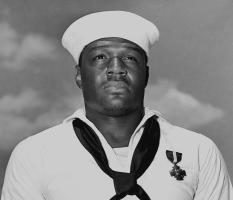 Today, on Martin Luther King, Jr. Day, the US Navy officially named the newest of the future Gerald R. Ford-class aircraft carriers, not after a president, a senator, an admiral or a historic battlefield. Instead, they named the carrier after Doris “Dorie” Miller, an African-American Navy Messman, who during the attack on Pearl Harbor, helped save the lives of his shipmates and valiantly fought attacking Japanese forces. For his bravery, Miller was awarded the Navy Cross — the first African-American to receive this honor. Almost two years after his valor at Pearl Harbor, Miller was killed when his ship, an escort carrier, was sunk in battle.
Today, on Martin Luther King, Jr. Day, the US Navy officially named the newest of the future Gerald R. Ford-class aircraft carriers, not after a president, a senator, an admiral or a historic battlefield. Instead, they named the carrier after Doris “Dorie” Miller, an African-American Navy Messman, who during the attack on Pearl Harbor, helped save the lives of his shipmates and valiantly fought attacking Japanese forces. For his bravery, Miller was awarded the Navy Cross — the first African-American to receive this honor. Almost two years after his valor at Pearl Harbor, Miller was killed when his ship, an escort carrier, was sunk in battle.
Here is wonderful drone footage by Ryan Smith of the Massachusetts Maritime Academy‘s school ship TS Kennedy as it departs for its Sea Term 2020. The ship sails down Buzzard’s Bay bound for Panama where it will transit the Canal. The ship will cross the Equator and make port calls in Balboa, Panama; Golfito, Costa Rica; Willemstad, Curacao; and Tampa, Florida.
The Kennedy was built as a C-4 class breakbulk freighter, the Velma Lykes, at Avondale Industries, New Orleans, LA, for Lykes Brothers Steamship Company in 1966. She has served as Mass. Maritime’s school ship since 2003. Kennedy was deployed to New York Harbor in support of Hurricane Sandy relief efforts in 2012 and Hurricane Maria at Puerto Rico in 2017.
Sea Term 2020 – TS Kennedy Departs!
For more great drone footage by Ryan Smith, click here or here. Also, check out his Youtube and Facebook pages.
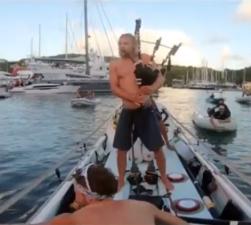 Congratulations to Ewan, Jamie, and Lachlan MacLean, three brothers from Edinburgh, Scotland who rowed across the Atlantic in just 35 days. They departed from La Gomera, in the Canary Islands on 12 December and completed the 3,000-mile row to Antigua as part of the Talisker Whisky Atlantic Challenge.
Congratulations to Ewan, Jamie, and Lachlan MacLean, three brothers from Edinburgh, Scotland who rowed across the Atlantic in just 35 days. They departed from La Gomera, in the Canary Islands on 12 December and completed the 3,000-mile row to Antigua as part of the Talisker Whisky Atlantic Challenge.
In the race, the MacLean brothers set three world records. They broke the previous record time of 41 days for a trio to row across the Atlantic. They also are the first trio of brothers on record to row across any ocean and also the youngest team of three to complete the crossing. Jamie is 26, Ewan is 27, and Lachlan is 21 years old.
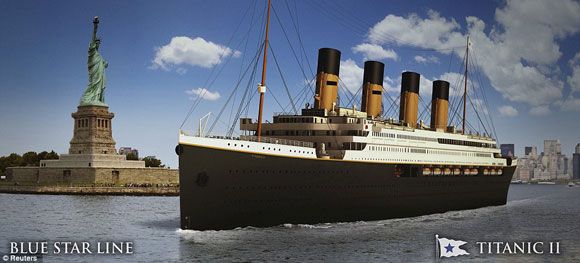 Will the Titanic II ever be built? And if so, when will it sail?
Will the Titanic II ever be built? And if so, when will it sail?
Back in 2012, billionaire Australian businessman Clive Palmer announced the construction of a modern “replica” of the doomed passenger liner RMS Titanic which sank after striking an iceberg in 1912. Palmer’s Titanic II was to be built in a Chinese shipyard and go into service in 2016. Since then the project has moved in fits and starts. The project finances fell apart for several years. The ship delivery dates moved first to 2018 and now to 2022. There has been an abundance of announcements, CGI drawings, and videos, while apparently no steel has actually been cut.
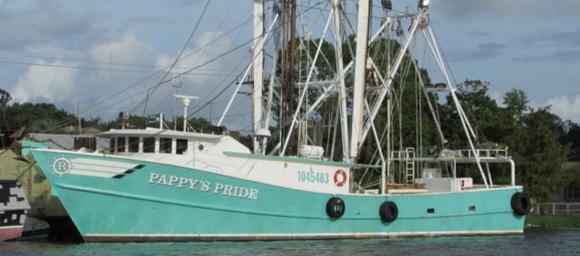 On Tuesday around 3:35 PM the Coast Guard in Galveston, TX was notified that a fishing boat, the 82′ long Pappy’s Pride, had collided with the 600-foot chemical tanker Bow Fortune. The fishing boat had capsized and four crew were in the water. One crew member was subsequently rescued, one died and two remain missing. The tanker was reported to be under pilotage at the time of the collision. Heavy fog was also reported to have limited visibility and to have hampered the search for the missing crew.
On Tuesday around 3:35 PM the Coast Guard in Galveston, TX was notified that a fishing boat, the 82′ long Pappy’s Pride, had collided with the 600-foot chemical tanker Bow Fortune. The fishing boat had capsized and four crew were in the water. One crew member was subsequently rescued, one died and two remain missing. The tanker was reported to be under pilotage at the time of the collision. Heavy fog was also reported to have limited visibility and to have hampered the search for the missing crew.
How the fishing vessel came to collide with the tanker is unclear. Photographs of Pappy’s Pride show radar and multiple radio antennas. Presumably, both vessels also had AIS.
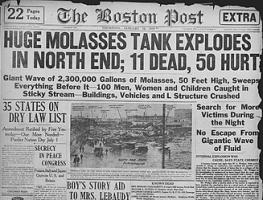 We are having a relatively warm January with significantly fluctuating temperatures. Similar weather conditions 101 years ago, coupled with a shoddily built storage tank, caused the Great Boston Molasses Flood, which inundated Boston’s North End sending a wall of molasses, killing 21 and injuring 150. A repost about the tragedy.
We are having a relatively warm January with significantly fluctuating temperatures. Similar weather conditions 101 years ago, coupled with a shoddily built storage tank, caused the Great Boston Molasses Flood, which inundated Boston’s North End sending a wall of molasses, killing 21 and injuring 150. A repost about the tragedy.
The Purity Distilling Company built a large molasses storage tank on Commercial Street in Boston’s North End to store molasses until it could be distilled into alcohol. In early January 1919, just a few days before the disaster, a ship had discharged a full load of molasses into the tank. When the cargo was discharged, the weather was cold, only around 4 degrees F. Then on January 15th, the temperature rose suddenly to an unseasonably warm 40 degrees.
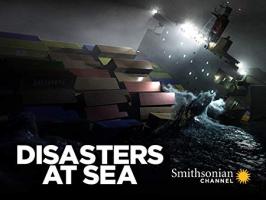 There are so few well-done documentary series involving ships and the sea that it seems worth pointing out that the excellent Disasters at Sea has been picked up for a second season. The series is produced by Exploration Production Inc. in association with Smithsonian Networks and Discovery Channel (Canada). Season Two was broadcast in Canada last summer and fall and is now being broadcast on the Smithsonian channel in the US. Episodes are also available on Amazon Prime, YouTube, and other streaming services.
There are so few well-done documentary series involving ships and the sea that it seems worth pointing out that the excellent Disasters at Sea has been picked up for a second season. The series is produced by Exploration Production Inc. in association with Smithsonian Networks and Discovery Channel (Canada). Season Two was broadcast in Canada last summer and fall and is now being broadcast on the Smithsonian channel in the US. Episodes are also available on Amazon Prime, YouTube, and other streaming services.
This season’s episodes:
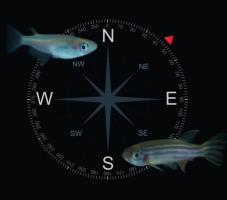 Six years ago, we posted about research that documented that when dogs defecate, they usually align their bodies along the magnetic north-south axis, not unlike the needle of a magnetic compass. It turns out that dogs are not unique in being able to sense the earth’s magnetic field and act like bio-compasses. Many animals, including humans, appear to be magnetoreceptive.
Six years ago, we posted about research that documented that when dogs defecate, they usually align their bodies along the magnetic north-south axis, not unlike the needle of a magnetic compass. It turns out that dogs are not unique in being able to sense the earth’s magnetic field and act like bio-compasses. Many animals, including humans, appear to be magnetoreceptive.
Scientists have documented that cows and deer graze and rest aligning themselves with magnetic north, all other factors being equal. (Wind and sun also affect the directions faced by cows, in particular.)
This morning’s CBS Sunday Morning news program had an intriguing featuring the octopus, in particular, and cephalopods, in general. Both unworldly and highly intelligent they are as close to alien life forms as one can find on the planet. CBS’s Chip Reid visits scientists at New England Aquarium in Boston, and the Marine Biological Laboratory in Woods Hole, Mass., and talks with Sy Montgomery, author of “The Soul of an Octopus,” about these curious creatures. Well worth watching.
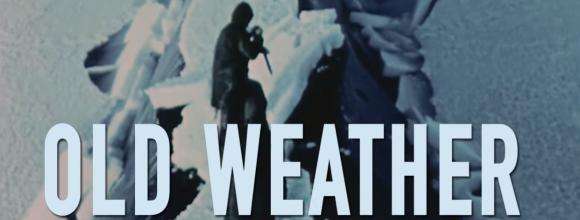 One of the better ways to tell if a model works at predicting the future is to run it in reverse to see how well it predicts the past. Climate change models so far have had their limitations. Most current models have significantly underestimated the rate of climate change. But where does one find accurate climate data for the last century or two? For more than a decade climate scientists have been using weather observations from ship’s logs to build the database they need to track climate conditions over time.
One of the better ways to tell if a model works at predicting the future is to run it in reverse to see how well it predicts the past. Climate change models so far have had their limitations. Most current models have significantly underestimated the rate of climate change. But where does one find accurate climate data for the last century or two? For more than a decade climate scientists have been using weather observations from ship’s logs to build the database they need to track climate conditions over time.
Thousands of ships logs with millions of weather observations have been collected and have provided a veritable treasure trove of climate data. One problem, however, is how to convert information recorded in pen and ink on paper in the old logs into a form that can be used for analysis in computer models.
 In addition to more than 24 people who have died in the terrible Australian bushfires, an incredible number of animals have also perished. Estimates of wildlife deaths range from millions to a billion animals. More than 25.5 million acres of land — an area the size of South Korea — have been razed by the fires.
In addition to more than 24 people who have died in the terrible Australian bushfires, an incredible number of animals have also perished. Estimates of wildlife deaths range from millions to a billion animals. More than 25.5 million acres of land — an area the size of South Korea — have been razed by the fires.
Against this horrific backdrop, here is a minor bit of good news. As we posted previously, the Australian Navy landing ship HMAS Choules, supported by the training ship, MV Sycamore, recently evacuated 1,000 tourists and residents stranded by bushfires in Mallacoota, Australia. Along with the evacuees also came 135 dogs, two cats, two birds, and a rabbit.
The crew of the Choules divided off a section of a vehicle deck to provide a sort of dog-dare care for the dogs. Accommodations for the cats and the rabbit were provided separately. For a video of the shipboard kennel click here.
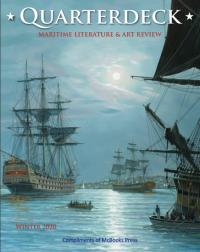 The Winter 2020 edition of Quarterdeck, hosted by McBooks, is out. If you like nautical fiction, the quarterly e-journal edited by George Jepson is a treasure.
The Winter 2020 edition of Quarterdeck, hosted by McBooks, is out. If you like nautical fiction, the quarterly e-journal edited by George Jepson is a treasure.
The Winter 2020 edition features an interview with Alaric Bond and a review of the Hellfire Corner; the first book in the Coastal Forces series, due out in February. Additionally, Chris Durbin has an article, The First Landing Craft, Purpose-built for British amphibious operations, as well as a feature on his latest novel, Perilous Shore. Antoine Vanner‘s new novel Britannia’s Innocent is also featured. Articles by Kathy Stockwin, Kydd’s Portsmouth, and Kim Reeman, When Heroes Die, are fascinating.
If you are not familiar with Quarterdeck, it is definitely worth checking out.
 Good ideas are rarely new. Container ships revolutionized liner shipping in the 1960s and 70s. Nevertheless, the idea of carrying cargo in easily handled standardized containers goes back at least 2,000 years.
Good ideas are rarely new. Container ships revolutionized liner shipping in the 1960s and 70s. Nevertheless, the idea of carrying cargo in easily handled standardized containers goes back at least 2,000 years.
I was reminded of this when reading about the recent discovery of a shipwreck found near the fishing port of Fiskardo on the north coast of Kefalonia, Greece, dating between 1 BC and AD 1, according to Greek researchers. The upper portion of the 34-meter Roman ship is gone, but its cargo of an estimated 6,0000 amphorae is in remarkably good shape. The Daily Mail notes that the Fiskardo shipwreck is one of the largest four found in the Mediterranean Sea, and the largest yet found in the eastern Mediterranean.
An amphora is a distinctive type of clay container usually with two handles, a narrow neck, and often a pointed base. It was widely used in early Mediterranean shipping to carry both liquids and dry goods. While they are commonly associated with wine, they were also used to transport grains and other goods that needed protection from the weather. They came in a variety of different sizes ranging from 5′ tall to less than a foot high. Most were around 3′ tall and carried around 100 pounds of cargo. The pointed end made them easy to sit upright in sand or soil and they could either be carried by one or two persons using the handles or be rolled up a ramp to the ship for loading. Continue reading
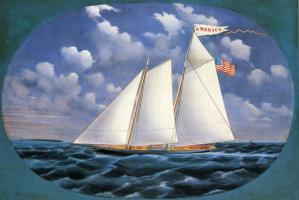 Shortly after winning the Sydney Hobart Race for the third time, the maxi-yacht Comanche has been sold by its current owners, Jim Cooney and his wife Samantha Grant, to Russian interests. Perhaps, oddly enough, the transaction brought to mind the yacht America of 1851.
Shortly after winning the Sydney Hobart Race for the third time, the maxi-yacht Comanche has been sold by its current owners, Jim Cooney and his wife Samantha Grant, to Russian interests. Perhaps, oddly enough, the transaction brought to mind the yacht America of 1851.
International yacht racing has traditionally been a sport for the rich. The cliche that a yacht is a hole in the water into which the owner pours money, is often repeated because it is, more often than not, highly accurate.
A fun video for a Monday. A timelapse video of the 11-hour transit from the Pacific to the Atlantic on the Ocean Princess in just under 7 minutes. Shot by Steve Noble on February 28th, 2016.
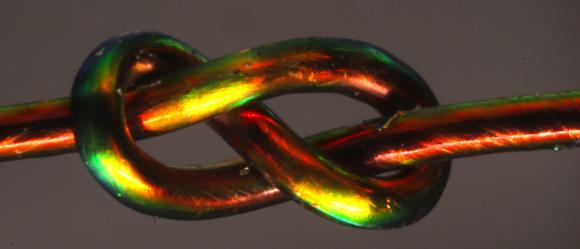 An interesting new technology, involving special fibers that change color when they are under strain, is allowing scientists to analyze the efficiency of knots. The technology is described in a recent paper by a team lead Vishal P. Patil in the journal Science.
An interesting new technology, involving special fibers that change color when they are under strain, is allowing scientists to analyze the efficiency of knots. The technology is described in a recent paper by a team lead Vishal P. Patil in the journal Science.
 Just before the New Year, 21-foot-tall, 8-foot-wide Coast Guard red navigation buoy #8 washed up out of the fog in New Smyrna Beach, Fla. — its light still blinking — nearly 200 miles away from its mooring at the entrance to Port Royal Sound north of Hilton Head Island.
Just before the New Year, 21-foot-tall, 8-foot-wide Coast Guard red navigation buoy #8 washed up out of the fog in New Smyrna Beach, Fla. — its light still blinking — nearly 200 miles away from its mooring at the entrance to Port Royal Sound north of Hilton Head Island.
It was originally reported to be a buoy that disappeared in 2017 following Hurricane Irma. When that buoy disappeared, it was replaced by a new buoy, which the Coast Guard checked on after Hurricane Dorian blew through. As of last September, the buoy was still there. Sometime in the intervening months, the buoy apparently broke free and no one noticed.
The Australian Navy landing ship HMAS Choules, supported by the training ship, MV Sycamore, evacuated 1,000 tourists and residents stranded by bushfires in Mallacoota, Australia.
ABC News Australia reports that about 4,000 people, including some 3,000 tourists, have been stranded in the town since they were forced to shelter on the foreshore as the fire approached on New Year’s Eve. Roads in and out of the isolated town, in Victoria’s far east, have been blocked by the still-burning blaze and could take weeks to clear.
The most vulnerable in the town are being evacuated by helicopter. The process of loading the vessels took several hours, and the journey from Mallacoota to Hastings, on Western Port, should take a further 17 hours.
Mallacoota evacuations begin as thousands trapped by fires are transported to Navy ships | ABC News
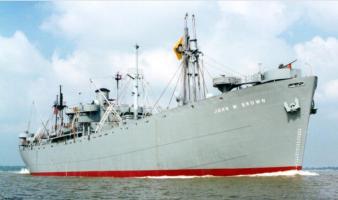 As we have previously posted, the restored Liberty ship, John W. Brown, was at risk of becoming homeless when its five-year agreement for berthing at Rukert Terminals’ Pier C in Canton, Maryland expired last September. Now, if all goes well, the historic ship may find a new home at the site of the Bethlehem Fairfield Shipyard in Baltimore, where she was built in 1942.
As we have previously posted, the restored Liberty ship, John W. Brown, was at risk of becoming homeless when its five-year agreement for berthing at Rukert Terminals’ Pier C in Canton, Maryland expired last September. Now, if all goes well, the historic ship may find a new home at the site of the Bethlehem Fairfield Shipyard in Baltimore, where she was built in 1942.

The USNO Millennium Time Ball
Last night in New York City, over one million people watched a jeweled ball drop in Time Square at exactly midnight to mark the arrival of the New Year. Over a billion people are believed to have watched the festivities on television or on-line. The six-ton Waterford crystal ball covered in 32,276 LED lights is not actually “dropped” but lowered from a flag pole on the roof of One Times Square. In New York City, the tradition dates back to 1907. But where did the tradition of dropping a ball to mark the time originate? The practice dates back to 1829 and was related to helping sailors calculate their position at sea. Here is an updated post from several years ago.
